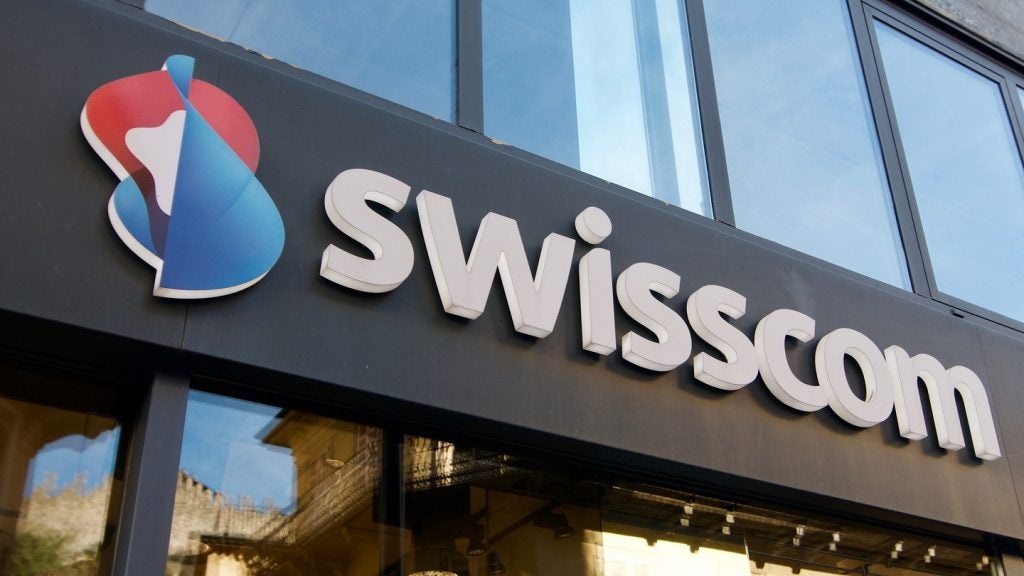Industry Attractiveness
South Africa has the largest insurance industry in Africa, accounting for 78.6% of the continent’s life and around 52% of non-life gross premiums. The industry grew to ZAR400.6 billion (US$49.0 billion) in 2012 at a CAGR of 3.6%, from 2008.
The European financial crisis slowed GDP growth from 3.1% in 2011 to 2.6% in 2012, but the insurance industry still registered a positive year-on-year growth of 4.67% for 2012. Insurance penetration in South Africa stood at 12.7% in 2012, higher than the global average of 7.5%.
The South African insurance industry’s value is expected to increase at a CAGR of 5.1% from 2013 to 2017. This will be mainly supported by stable GDP growth, favorable insurance reforms, the expansion of financial services to the low-income population, and the adoption of Solvency Assessment & Management (SAM) regime. The rapid expansion of microinsurance will also be a major growth driver.
There has been a steady rise in per capita income in the country from US$3,704.8 in 2008 to US$3,825.1 in 2012, due to the growing service sector and trade exports, despite a fall in income levels in 2010.
Awareness of the needs and benefits of insurance and the rising disposable incomes of younger people offer significant potential for insurers to access underdeveloped sectors in the South African insurance industry. There is also substantial demand for insurance due to high crime rates, and health problems such as HIV/AIDS diagnosis rates.
South Africa has Africa’s most developed financial market, supported by a comparatively stable regulatory framework. This has enabled the country to attract investments from the world’s leading insurance companies. South Africa’s rapid infrastructure growth, especially in transport and telecommunication following hosting the FIFA World Cup in 2010, made the country more attractive to tourists – arrivals in the country grew by 10.2% in 2012.
A number of reforms are set to be introduced by the country’s insurance regulator, The Financial Services Board of South Africa (FSB). These include the implementation of the Solvency Assessment Management (SAM) framework and Treating Customers Fairly (TCF) standards by January 2014. These changes are likely to encourage better management of solvency risks and improve the quality of services provided by insurers.
There are also several challenges which could hinder the industry’s development over the coming years, despite the growth opportunities. Although the country’s population is increasing steadily, the HIV/AIDS epidemic remains a major threat, which lowers the country’s life expectancy.
Furthermore, several new insurance regulations, such as microinsurance legislation and binder regulations, will be enforced in quick succession. The impact of the proposed National Health Insurance (NHI) scheme, a government program implemented in 2012, is not yet known. The European crisis, rising costs of operations due to increased claims, and losses due to natural disasters are also expected to be hindrances to industry growth in the country.
Segment Outlook
The South African life insurance segment accounted for 78.6% of Africa’s total life insurance gross written premium in 2012. The segment registered a moderate CAGR of 2.3% between 2008 and 2012, mainly due to the European economic crisis which hampered economic growth in the country and affected insurers’ confidence levels. This also affected the penetration rate, which declined from 12.1% in 2008 to 9.5% in 2012. There were 81 registered life insurance companies operating in 2012 under FSB regulations. Emerging direct online marketing companies are also rapidly growing in the South African life segment.
The life insurance segment’s written premiums grew from ZAR274.1 billion (US$33.8 billion) in 2008 to ZAR300.1 billion (US$36.7 billion) in 2012. Although the individual life insurance category dominated written premium contributions in the segment with 31.1%, significant growth was seen in the group life and superannuation categories, which recorded respective CAGRs of 13.7% and 2.4%.
South Africa’s microinsurance business is the most developed in Africa, with more than 60% of Africa’s microinsurance written premium contributions coming from within the country in 2011. Funeral insurance, ordinary life and credit insurance made up maximum of the microinsurance business in 2011. Regulation of microinsurance in South Africa is in its draft stage, and is expected to encourage the sale of microinsurance products through a liberalized regulatory environment.
The life insurance segment in South Africa is mainly driven by the large share of retirement savings and pension funds, which accounted for around 35% of the people’s savings and investment objectives in 2012. Long-term insurance companies offer tax-efficient retirement savings products directly to customers, including various forms of annuity.
The South African life segment is expected to record a CAGR of 4.1% between 2013 and 2017, due to being supported by stable economic conditions. Increasing per capita income, favorable insurance sector reforms and the expansion of financial services to low-income groups will support the growth of the segment. The expansion of financial services through microinsurance programs along with steady growth of the online distribution channel will also drive growth.
The SAM framework, with its reserves and capital requirements for insurers, is expected to reform the insurance industry. It will eliminate smaller, more risky insurers and enable larger operators to increase efficiency levels.
Distribution Channels
How well do you really know your competitors?
Access the most comprehensive Company Profiles on the market, powered by GlobalData. Save hours of research. Gain competitive edge.

Thank you!
Your download email will arrive shortly
Not ready to buy yet? Download a free sample
We are confident about the unique quality of our Company Profiles. However, we want you to make the most beneficial decision for your business, so we offer a free sample that you can download by submitting the below form
By GlobalDataThe rapid expansion of distribution channels across rural South Africa has driven premium sales in the insurance industry. The penetration of financial services through microinsurance programs has helped in establishing distribution channels in remote small towns and villages. A wide range of distribution channels has emerged, such as direct marketing, agents, bancassurance, online distribution and city-based brokers, along with local governmental agencies and NGOs in rural markets.
Brokers are the preferred distribution channel in the South African life insurance segment, accounting for of total written premiums. South African insurance brokers are regulated by the National Insurance Brokers Association (NIBA), which sets rules and regulations with respect to membership, education, and conduct of South African brokers. The governance of NIBA makes brokers the most trusted distribution channel in the country. The written premiums generated through brokers fell slightly from ZAR45.2 billion (US$5.6 billion) in 2008 to ZAR44.6 billion (US$5.4 billion) in 2012, at a CAGR of -0.3%. This was mainly due to the overall slowdown in the insurance industry caused by the global economic crisis. Brokers are expected to retain their dominance in the industry and register a CAGR of 2% from 2013 to 2017.
Online distribution is the fastest-growing channel in South Africa, due to the advancement of internet technology and the high popularity of e-commerce among consumers. Online marketing enables insurers compare a range of different policies, drive down distribution costs and avoid middlemen.
The online channel has become mature enough to provide an independent route for insurance companies, due to the rapid growth of e-commerce. It also allows consumers to purchase and administer up to ZAR500,000 (US$49,802.5) of insurance cover using their mobile phones.
Bancassurance has been one of the most prominent distribution in the South African insurance industry. Significant tie-ups among leading banks and insurance companies resulted in consumer awareness reaching a high of 80% in 2010, despite the bancassurance model’s late entry in the industry. Consumers are well aware of banks as a purchase point for insurance, and voluntarily approach banks to buy policies.
Direct sales advisors, once considered the backbone of the insurance distribution network in South Africa, are rapidly losing relevance in an increasingly regulated and diversified market. Tighter regulations are also now in place, such as the recent FSB notice to financial advisers to impose stricter commission regulations, following the continued mis-selling of financial products and poor consumer service.
The major challenge faced by insurers is the commission rate paid to these channels, which led to a sharp increase in costs, from 14.7% in 2008 to 17.5% in 2012, at a CAGR of 4.5%. Life insurance companies are expected to initiate cost-control measures for their distribution channels. Online insurance sales are expected to rise rapidly, powered by the growth in e-commerce among semi-urban and rural customers who previously did not have internet access. This will increase the penetration of insurance into semi-urban and rural markets in South Africa.
Market Developments
Sanlam net operating profit rises in H1 2013
09 September, 2013
Sanlam Group, a South Africa-based financial services and life insurance company, has reported 23% rise in net operating profit per share during the first six months ended 30 June 2013, compared to net operating profit value during the same period in 2012.
The increase in operating profit was primarily due to acquisitions made in India and Malaysia during the second half of 2012 and 2013, including Sanlam Emerging Markets (SEM) acquisition of 49% stake in Pacific & Orient Insurance Co Berhad (P&O).
New business volumes increased 37% in the first half (H1) of 2013, as against the business volumes during the comparable period in 2012.
Sanlam Group CEO Dr Johan van Zyl said a strong commitment to strategy over the past ten years as well as the depth of skills and experience within Sanlam had yielded the consistent satisfactory performance over the years.
NAICOM approves Old Mutual’s acquisition of Oceanic Life Insurance
18 March, 2013
The National Insurance Commission (NAICOM) has sanctioned the acquisition of Oceanic Life Insurance Limited, a former subsidiary of the defunct Oceanic Insurance Company Limited by Old Mutual Plc, a South Africa-based Insurance firm.
The new entity is to be known as Old Mutual Nigeria Life Assurance Company Limited (OMNiLAC).
Under the new arrangement, the company is owned 70% by Old Mutual Nigeria Services Company Limited (OMNSC) while Cressida Nigeria Limited has 29% stake in the company. The remaining one per cent is owned by private individuals.
Old Mutual Plc has finalised its investment in Oceanic Life Insurance Limited by acquiring the majority shareholding of the company.
Commenting on the deal, Old Mutual Africa managing director, Johannes Gawaxab, said: “it was in furtherance with the expansion of its presence in sub-Saharan Africa.”
“With the capability that the business had collectively established over time, Old Mutual is well-positioned to leverage this competitive advantage, particularly in the mass market segments,” Gawaxab said.
Key Industry Trends and Drivers
Consumer Drivers
Rising power of the ‘black diamond’ middle class
A rising middle class, mainly in the black population, has led to a rapid rise in income, largely as a result of the South African government’s Black Economic Empowerment (BEE) program. After the end of the apartheid era, the government took affirmative action to revitalize the country’s social structure, in particular its high unemployment and crime rates. The black population in South Africa includes Africans, mixed-race people and Indians. Companies receive benefits from the government if they ensure black individuals are placed in positions of power such as ownership, management or employment equity. This growing black middle class represents more than 4 million adult black South Africans, who contributed more than ZAR400 billion (US$48.9 billion) to the economy through their annual spending in 2012.
Increasing life expectancy and higher employment opportunities
Increasing life expectancy was a key growth driver in the South African life insurance segment during the review period. Life expectancy is used to calculate the premium paid by policyholders when purchasing life insurance, and in South Africa, life expectancy increased from 51 years in 2007 to 52.6 in 2011. It is projected to increase further with improvements in health measures and new anti-retroviral medication for HIV patients.
Additionally, upcoming sectors such as travel and tourism and the medical and health industries are contributing to employment in the country. Government initiatives to increase employment, along with the rise of the private sector in the economy, are expected to create new employment opportunities in South Africa. These are expected to contribute towards the growth of the life insurance segment.







